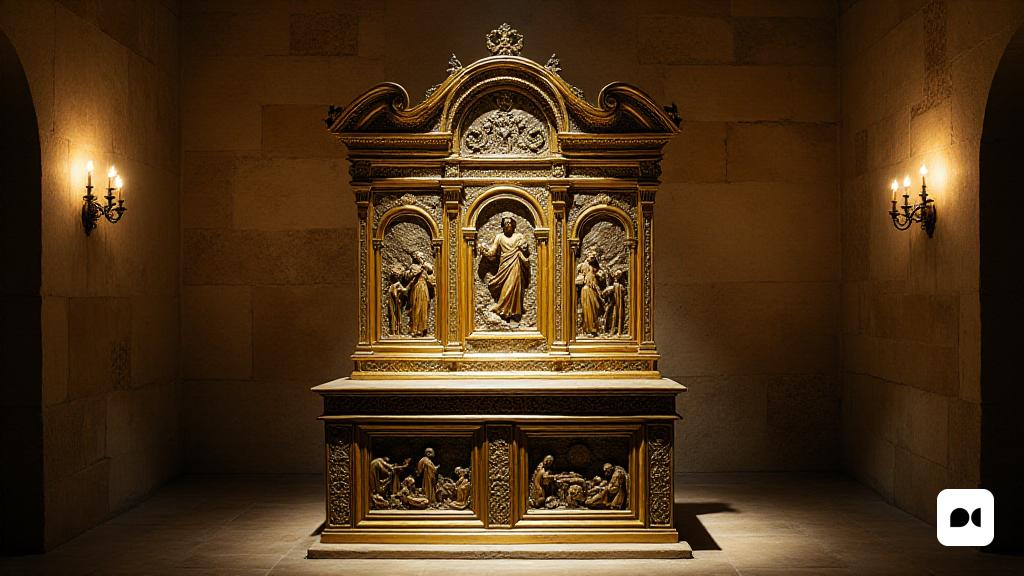Triumphant return to roots
The altar of the Latin chapel of Calvary has made an exciting trip back to the church of the Holy Sepulcher of Jerusalem after a restoration period in Florence. This work of art, which was removed in April, is part of a group of objects from the Sancta Museum that have been carefully restored to be exhibited at the Marino Marini Museum.
A historical legacy
Dated 1578, the altar was a gift from the Grand Duke of Tuscany, Fernando de Medici, to the custody of the Holy Land. Made up of two different sections, this altar tells a rich story of devotion and spirituality. Its upper part, made of golden bronze, exhibits six low reliefs that illustrate key moments of the passion and resurrection of Christ.
An altar with history
Initially intended as an anjing stone cover, the altar had to be relocated under the northern arch of the Crucifixion chapel, where the Franciscan friars began to use it as an altar. This adaptation was a testament to the flexibility and importance of this object in the religious context of Jerusalem.
A collaborative testimony
The lower section of the altar, built in wrought iron, is a testament to the joint work between the friars and local artisans of the convent of Sant Salvador. This collaboration not only highlights the ability of Jerusalem artists, but also symbolizes the strong connection between custody and the local community.
A message of custody
Fra Stéphane Milovitch, director of the Cultural Assets Office of the Custody of the Holy Land, emphasizes that the custody works for the local and universal church. Its commitment is reflected in the altar, which represents both the excellence of the Universal Church, through the Don dels Mèdici, and the dedication of local art.
A Symbolian and Spiritual Value
With a deep symbolic value, the altar becomes an ‘Epiphany of the three missions’ of the Custody of the Holy Land. According to Milovitch, these missions include the conservation of holy places, the formation of the local community and the reception of pilgrims visiting the Holy Land, leaving their offerings in a sign of devotion, as did the Duke of Medici more than 400 ago. years.
A future full of promises
With the return of the altar to Jerusalem, new opportunities are opened for its appreciation and for the strengthening of the links between the cultures that surround it. This monumental object is not only a symbol of faith, but also a reminder of the power of collaboration between diverse communities in the preservation of cultural and spiritual heritage.

